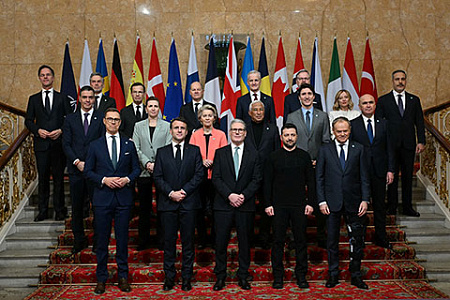
A new proposal by Donald Trump to reshape military aid for Ukraine has exposed significant divisions within the NATO alliance, as key European partners, including France, Italy, and the Czech Republic, have signaled they will not participate in the plan. While these nations reaffirm their commitment to supporting Kyiv, their refusal highlights a growing divergence in strategy, with some prioritizing the strengthening of their own domestic defense industries over purchasing American arms.
The new American framework, a sharp departure from the previous administration’s policy of direct US-funded aid, calls on European allies to purchase weapons from the United States. These arms would then either be transferred directly to Ukraine or used to replenish the European nations’ own arsenals after they send their existing equipment to Kyiv. This effectively shifts a significant financial and logistical burden onto the European members of the alliance.
Nevertheless, the initiative has secured backing from a bloc of wealthy northern nations. NATO Secretary-General Mark Rutte confirmed that a core group, including the United Kingdom, Canada, the Netherlands, Denmark, Sweden, Finland, and Norway, has agreed to the procurement plan. Crucially, they are joined by Germany, Europe’s largest economy, which will facilitate the transfer of much-needed American Patriot air defense systems to Ukraine under this new arrangement.
However, this consensus is far from unanimous. Czech Prime Minister Petr Fiala stated that his country would not buy American weapons for Ukraine, opting instead to focus on separate aid projects, most notably its successful initiative to procure and deliver large quantities of artillery shells for Kyiv. This sentiment was echoed in Paris and Rome, where officials cited different strategic and economic priorities.
Both France and Italy intend to supply Ukraine using their own burgeoning defense sectors. This approach aligns with French President Emmanuel Macron’s push for a dramatic increase in domestic defense spending and industrial capacity. The two countries have already jointly supplied Ukraine with their co-developed SAMP-T air defense systems, making their decision a logical extension of existing policy. Furthermore, both governments are grappling with tight national budgets, making large-scale expenditures on American military hardware a politically unpopular option at home.
This split over Trump’s plan reflects a deeper, long-standing European debate on defense spending and autonomy. For decades, many allies have been reluctant to meet the NATO-agreed target of spending 2% of GDP on defense, a goal set in 2014 that remains unfulfilled by several members. While nations like the Baltic states perceive an immediate threat from Russia and are willing to spend whatever is necessary, their economic scale limits their ability to be major players in a purchase-driven plan. This leaves the alliance navigating a complex landscape of varying threat perceptions, economic realities, and strategic ambitions as it attempts to forge a unified path forward on aid for Ukraine.
